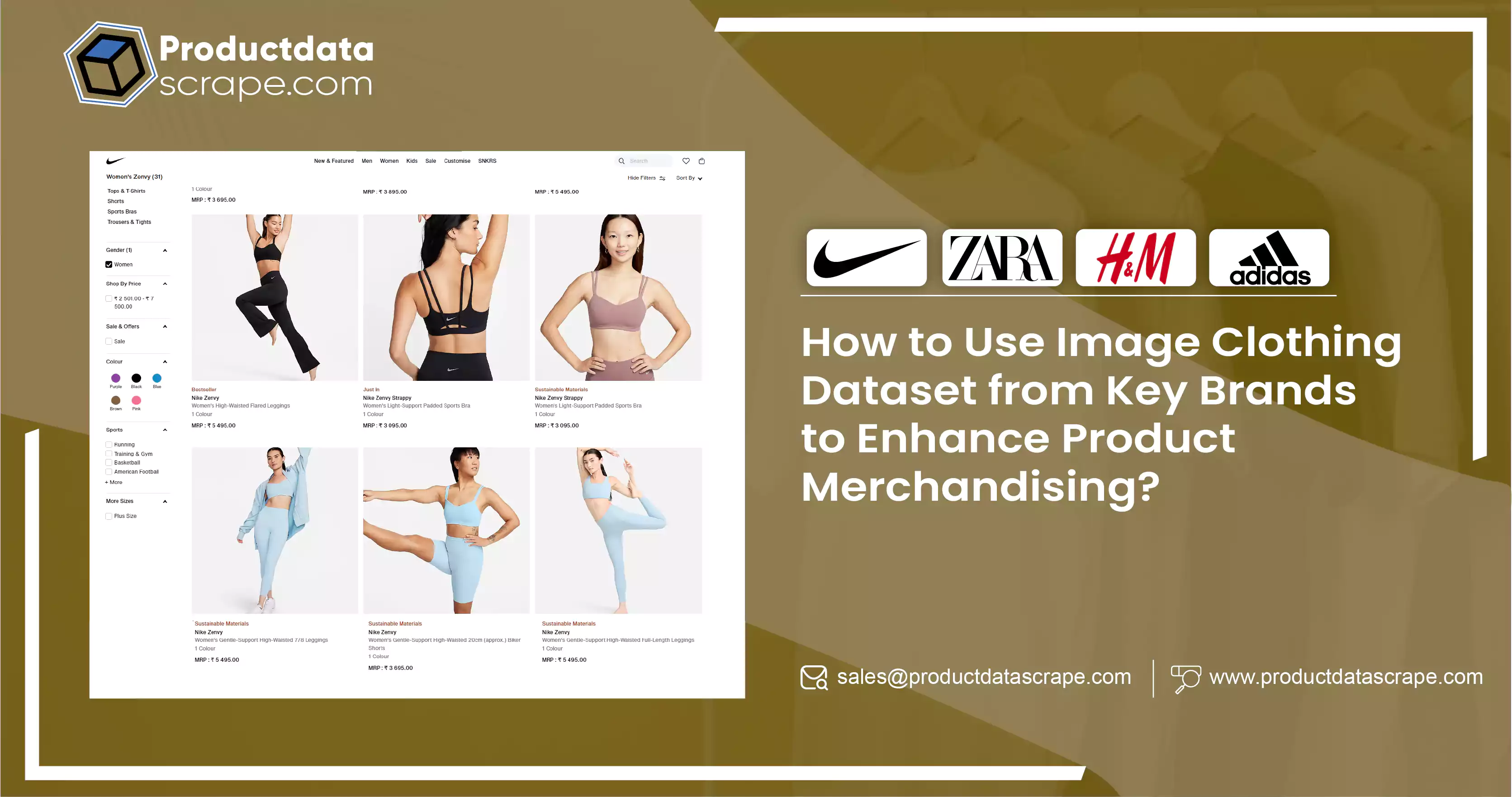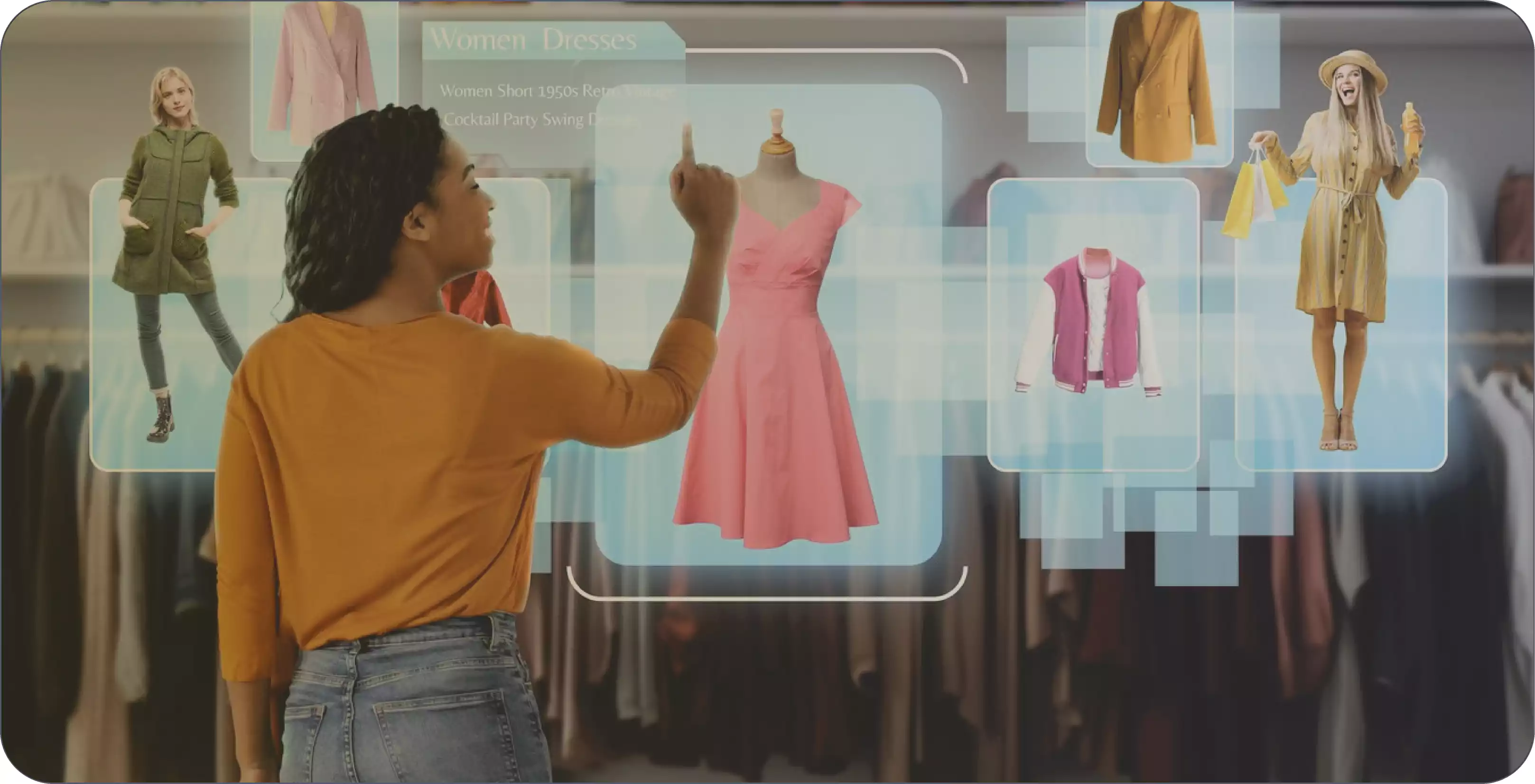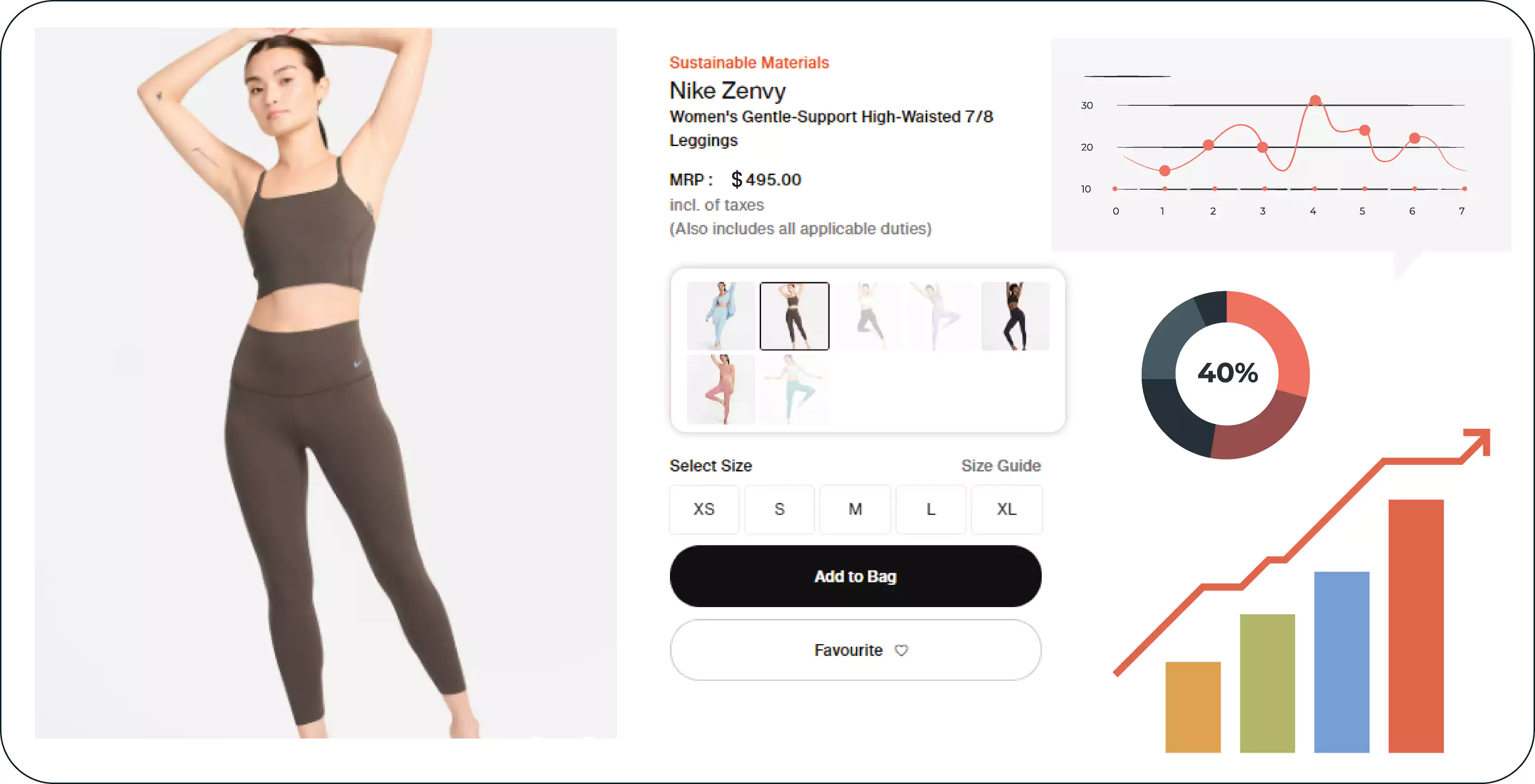 In today's dynamic fashion landscape, staying abreast of trends is paramount for brands vying to maintain relevance and competitiveness. The surge of e-commerce and social media platforms has democratized access to fashion content, granting consumers unprecedented exposure to diverse styles and designs. Consequently, brands must keenly understand consumer preferences to cater to their needs and desires effectively. At the forefront of this endeavor lies the image clothing dataset —a rich repository comprising an extensive array of images depicting clothing items from various fashion brands. This dataset is a powerful tool for brands seeking to decode consumer preferences, anticipate emerging trends, and refine their product offerings accordingly. By leveraging image datasets, brands can glean invaluable insights into style preferences, color palettes, and design aesthetics, enabling them to craft compelling collections and engage with their target audience more meaningfully and effectively.
In today's dynamic fashion landscape, staying abreast of trends is paramount for brands vying to maintain relevance and competitiveness. The surge of e-commerce and social media platforms has democratized access to fashion content, granting consumers unprecedented exposure to diverse styles and designs. Consequently, brands must keenly understand consumer preferences to cater to their needs and desires effectively. At the forefront of this endeavor lies the image clothing dataset —a rich repository comprising an extensive array of images depicting clothing items from various fashion brands. This dataset is a powerful tool for brands seeking to decode consumer preferences, anticipate emerging trends, and refine their product offerings accordingly. By leveraging image datasets, brands can glean invaluable insights into style preferences, color palettes, and design aesthetics, enabling them to craft compelling collections and engage with their target audience more meaningfully and effectively.
The Power of Image Clothing Datasets
 Image clothing datasets serve as invaluable resources for fashion brands, offering information that can shape their strategies and decisions. By meticulously analyzing these datasets, brands can unlock crucial insights into consumer preferences, emerging trends, and competitor landscapes. By scrutinizing patterns in style, color, and design within the datasets, brands can discern which elements resonate most strongly with consumers, enabling them to refine and optimize their product offerings. Moreover, fashion datasets allow brands to conduct comprehensive competitor analysis, allowing them to closely monitor rival collections, pricing tactics, and promotional activities. With this knowledge, brands can proactively adapt their strategies to maintain a competitive edge in the market. Ultimately, clothing datasets empower fashion brands to stay attuned to evolving consumer preferences, anticipate market shifts, and position themselves strategically within the industry landscape.
Image clothing datasets serve as invaluable resources for fashion brands, offering information that can shape their strategies and decisions. By meticulously analyzing these datasets, brands can unlock crucial insights into consumer preferences, emerging trends, and competitor landscapes. By scrutinizing patterns in style, color, and design within the datasets, brands can discern which elements resonate most strongly with consumers, enabling them to refine and optimize their product offerings. Moreover, fashion datasets allow brands to conduct comprehensive competitor analysis, allowing them to closely monitor rival collections, pricing tactics, and promotional activities. With this knowledge, brands can proactively adapt their strategies to maintain a competitive edge in the market. Ultimately, clothing datasets empower fashion brands to stay attuned to evolving consumer preferences, anticipate market shifts, and position themselves strategically within the industry landscape.
Top 5 Clothing Brands and Why Collect Datasets from These Brands?
Understanding consumer behavior and market trends is crucial for clothing brands to thrive in the dynamic landscape of fashion. By collecting datasets from renowned brands like Nike, Zara, Gucci, Uniqlo, and Adidas, valuable insights can be gleaned to inform strategic decisions in product development, marketing, and inventory management.
Nike Dataset: Nike is a globally renowned sportswear brand with innovative designs and high-performance apparel. Collecting Nike fashion product datasets could provide the following:
- Insights into trends in athletic wear preferences.
- Geographical variations in consumer behavior.
- The impact of marketing campaigns on sales.
Analysis of Nike's dataset could also help in understanding the correlation between product features (such as fabric technology or design elements) and customer satisfaction, leading to better product development strategies.
 Zara Dataset: Zara is a fast-fashion brand known for its rapid turnover of designs and agile supply chain management. Collecting Zara fashion product datasets could provide valuable insights into consumer preferences for fast-fashion items, seasonal trends, and the effectiveness of pricing strategies. Analyzing Zara's dataset could also reveal patterns in inventory management, such as which items sell out quickly and which linger on shelves, aiding in optimizing production and minimizing waste.
Zara Dataset: Zara is a fast-fashion brand known for its rapid turnover of designs and agile supply chain management. Collecting Zara fashion product datasets could provide valuable insights into consumer preferences for fast-fashion items, seasonal trends, and the effectiveness of pricing strategies. Analyzing Zara's dataset could also reveal patterns in inventory management, such as which items sell out quickly and which linger on shelves, aiding in optimizing production and minimizing waste.
 Myntra Dataset: Myntra is a leading Indian fashion e-commerce platform renowned for its extensive collection of clothing, footwear, accessories, and beauty products. Collecting the Myntra fashion products dataset could provide insights into luxury consumer behavior, including purchasing patterns, brand loyalty, and the influence of celebrity endorsements. Analysis of Myntra's dataset could also uncover trends in luxury fashion preferences across different demographics and regions, guiding marketing efforts and product positioning strategies.
Myntra Dataset: Myntra is a leading Indian fashion e-commerce platform renowned for its extensive collection of clothing, footwear, accessories, and beauty products. Collecting the Myntra fashion products dataset could provide insights into luxury consumer behavior, including purchasing patterns, brand loyalty, and the influence of celebrity endorsements. Analysis of Myntra's dataset could also uncover trends in luxury fashion preferences across different demographics and regions, guiding marketing efforts and product positioning strategies.
 H&M Dataset: H&M, short for Hennes & Mauritz AB, is a Swedish multinational clothing retail company known for its trendy and affordable fashion offerings. Collecting H&M fashion product datasets could provide insights into consumer preferences for casual apparel, including color choices, size distributions, and popular product categories. Analysis of H&M dataset could also reveal seasonal variations in demand and the effectiveness of promotions or collaborations, informing inventory planning and marketing campaigns
H&M Dataset: H&M, short for Hennes & Mauritz AB, is a Swedish multinational clothing retail company known for its trendy and affordable fashion offerings. Collecting H&M fashion product datasets could provide insights into consumer preferences for casual apparel, including color choices, size distributions, and popular product categories. Analysis of H&M dataset could also reveal seasonal variations in demand and the effectiveness of promotions or collaborations, informing inventory planning and marketing campaigns
 Adidas Dataset: Adidas is a global sportswear brand known for its wide athletic and lifestyle apparel and footwear range. Collecting Adidas fashion product datasets could provide insights into consumer preferences for specific sports-related products, such as running shoes or soccer jerseys, and lifestyle-oriented items like sneakers and athleisure wear. Analysis of Adidas' dataset could also reveal trends in influencer marketing effectiveness, social media engagement, and regional variations in product popularity, helping to tailor marketing strategies and product assortments to specific markets.
Adidas Dataset: Adidas is a global sportswear brand known for its wide athletic and lifestyle apparel and footwear range. Collecting Adidas fashion product datasets could provide insights into consumer preferences for specific sports-related products, such as running shoes or soccer jerseys, and lifestyle-oriented items like sneakers and athleisure wear. Analysis of Adidas' dataset could also reveal trends in influencer marketing effectiveness, social media engagement, and regional variations in product popularity, helping to tailor marketing strategies and product assortments to specific markets.
 Collecting fashion product image datasets from these clothing brands individually can help market researchers, retail analysts, and fashion designers understand consumer behavior, identify emerging trends, optimize inventory management, and enhance product development and marketing strategies. By web scraping e-commerce websites and leveraging data-driven insights, these brands can stay competitive in the rapidly evolving fashion industry and better meet their target consumers' evolving needs and preferences.
Collecting fashion product image datasets from these clothing brands individually can help market researchers, retail analysts, and fashion designers understand consumer behavior, identify emerging trends, optimize inventory management, and enhance product development and marketing strategies. By web scraping e-commerce websites and leveraging data-driven insights, these brands can stay competitive in the rapidly evolving fashion industry and better meet their target consumers' evolving needs and preferences.
Significance of Collecting Image Clothing Datasets
 In the digital age of fashion, images have become powerful tools for brands to convey their identity, showcase products, and engage with consumers. Collecting image clothing datasets is paramount for brands seeking to harness the visual landscape, offering invaluable insights into trends, consumer preferences, and marketing strategies. By analyzing these clothes segmentation datasets, brands can unlock opportunities for enhanced visual merchandising, personalized experiences, and competitive advantage in the ever-evolving fashion industry.
In the digital age of fashion, images have become powerful tools for brands to convey their identity, showcase products, and engage with consumers. Collecting image clothing datasets is paramount for brands seeking to harness the visual landscape, offering invaluable insights into trends, consumer preferences, and marketing strategies. By analyzing these clothes segmentation datasets, brands can unlock opportunities for enhanced visual merchandising, personalized experiences, and competitive advantage in the ever-evolving fashion industry.
- Visual Merchandising Optimization: Collecting image clothing datasets allows brands to analyze how consumers perceive their products visually. By understanding which images garner the most attention and engagement, brands can optimize their visual merchandising strategies to enhance product visibility and attractiveness.
- Style Trend Identification: Image datasets enable brands to identify emerging style trends by analyzing visual cues such as color combinations, patterns, and garment silhouettes. This insight helps brands stay ahead of the curve and develop collections that resonate with current fashion preferences.
- Customer Personalization: By analyzing image datasets alongside other customer data, brands can personalize the shopping experience for individual customers. It may involve recommending visually similar products based on a customer's past purchases or preferences, enhancing customer satisfaction and loyalty.
- Quality Control and Product Assurance: Image datasets can be used for quality control purposes, allowing brands to detect defects or inconsistencies in product appearance. By automating image analysis, brands can ensure that only high-quality products are delivered to customers, reducing returns and enhancing brand reputation.
- Competitive Analysis: Analyzing image datasets from competitors provides valuable insights into their product offerings, visual branding strategies, and market positioning. This information allows brands to benchmark their visual content against competitors and identify areas for differentiation or improvement.
- Social Media Marketing Optimization: Image datasets from social media platforms offer insights into consumer-generated content, including user-generated photos and influencer collaborations. Brands can leverage this data to optimize their social media marketing strategies, identify influential trends and influencers, and engage with their audience more effectively.
Conclusion: The collection and analysis of image clothing datasets hold immense significance for brands navigating the modern fashion landscape. These datasets provide a window into consumer preferences, style trends, and visual branding strategies, empowering brands to optimize merchandising, personalize customer experiences, and maintain competitive edges. By leveraging fashion clothing product datasets, brands can ensure product quality, refine marketing campaigns, and stay attuned to evolving market demands. As technology advances, the insights gleaned from image clothing datasets will remain invaluable assets for brands seeking to innovate, connect with consumers, and thrive in an increasingly visual-driven industry landscape.
Ethical principles form the core of Product Data Scrape's operations. From Competitor Price Monitoring to Mobile App Data Scraping, transparency and integrity guide our approach. With offices in various locations, we provide tailored solutions, aiming to exceed client expectations and drive success in data analytics.
Know More:
https://www.productdatascrape.com/image-clothing-dataset-from-key-brands-to-enhance-product-merchandising.php



































